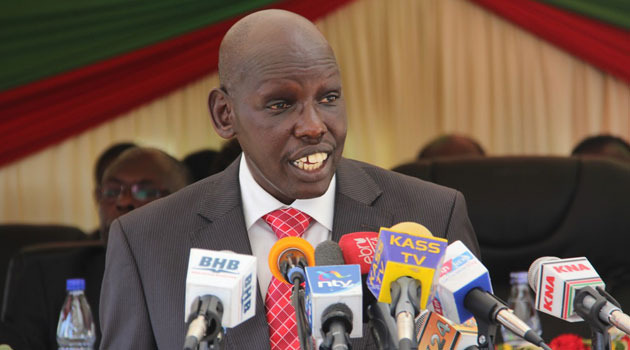
Govt faces hurdle financing free education over increased student population » Capital News
NAIROBI, Kenya, Mar 18 — The Ministry of Education has decried resource constraints triggered by the increasing student population.
As of the end of January 2024, Education Principal Secretary Belio Kipsang noted the student population had risen by one million, posing a significant challenge to government funding.
Kipsang noted the student population has been growing, but the amount allocated for Free Secondary Education capitation has remained the same.
“We have 4.2 million students in our secondary school. But the amount that’s continued to be given is around between Sh64 billion and Sh65 billion,” he told the National Assembly’s Public Accounts Committee on Monday.
He noted the sum of Sh65 billion cannot cater for Sh22,224 capitation per student, forcing a downward revision to Sh17,000.
“We can only divide that amount by the number of learners that we have today in our secondary schools standing at 4.2 million so that we can take care of kids in an appropriate amount,” he said.
“But essentially, if we were to give Sh 22,224 per student then we would only fund 3.2 million children, meaning that you will not be funding 1 million students in our schools today,” Kipsang added.
Capitation deficit
The PS urged Parliament to increase the blocked figure from Sh65 billion, to match the Sh22,224 capitation requirement per student for 4.2 million students in secondary schools.
“I want to confirm chair that this year with our education committee there was quite some good engagement and indications given that we shall be able to find a capitation at sh 22,224 times the number of learners,” he said.
The Kenya National Union of Teachers (KNUT) had protested the government’s failure to release capitation fees saying it was adversely affecting public school operations.
The Union stated that headteachers were struggling to run the institutions due to an unfolding current financial crisis.
Nominated MP John Mbadi, the committee chair, pointed out that even if the capitation was increased from Sh17,000 to Sh22,224 per student, the government would still underfund the State Department of Basic Education by Sh22 billion.
According to Mbadi, the current allocation has not factored in depreciation of the Kenya Shillings.
Kipsang confirmed that the current Sh17,000 given as capitation per student would amount to around Sh22 billion in underfunding.
He also said the underfunding would come down to around Sh11 billion by 2023 as there will be no form one joining the secondary schools.
“ The underfunding will come down to around Sh11 billion because will not be having students joining from one class that is why together with the Education Committee we are trying to ensure that underfunding is taken care of in the 2024/2025 financial year,” he said.
Kipsang warned principals and heads of institutions that they would face dire consequences if they continued charging extra levies, as the government funding already takes care of the needs of the schools in tuition-related facilities.
